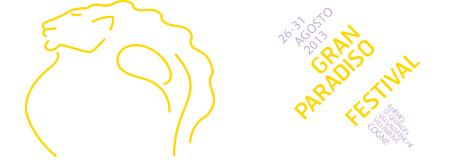
 FILMS
FILMS FILMS
Competition films:
· Aliens des fonds marins (Aliens of the Deep Sea) by Jerome Julienne e John Jackson (Canada)
· Ash Runners by Bertrand Loyer (France)
· Voyage au bout de l’hiver (Voyage to the end of the winter)by Anne e Erik Lapied (France)
· Amazon - Alive byChristian Baumeister (Germany)
· Zebras on the move byFernando Gonzales Sitges (Spain)
· Das Kornfeld (Secret stories of a wheat field)by Jan Haft (Austria)
· Rift Valley, the great rift byHarald Pokieser and Walter Koehler (Austria)
· Le divinità delle montagne (Mountain divinities)by Paolo Volponi (Italy)
· Green by Patrick Rouxel (France)
· Apuane, le montagne d’acqua (Apuane, water Mountains) by Valter Torri (Italy)
Synopsis of competition films
1- Aliens des fonds marins(Aliens of the Deep Sea) by Jerome Julienne e John Jackson (Canada)
The big octopodes that can be seen in the Pacific Ocean waters have always inspired disgust and dread. They are seen as slimy creatures, that can come up from the sea bottom to attack ships and drag unfortunate sailors down to the ocean’s black depths. But are octopodes really those evil and cruel monsters with a frightening intelligence? And what about the small octopodes from our seas? Are they also fearful and loathsome animals? These are obviously all rumours, apart from their intelligence: in fact octopodes have nine brains: an extremely developed central one and eight other brains, one for each tentacle. They are therefore extraordinary creatures: they have no skeleton, a bodiless head with soft and elastic flesh, eight strong arms, three hearts, nine brains. Hidden in the water since the dawn of time, they evolved in parallel to human beings. Following the experiments run by three prestigious scientific teams, the documentary shows the most incredible intelligent life of our planet.
2-ASH RUNNERS by Bertrand Loyer (France)
The incandescent ashes of a volcano suffocate life. When it erupts it seems difficult to survive in its vicinity. Animals only have two choices: to escape from the volcano’s fury or to stay and adapt. Some animals are surprisingly attracted to the eruption area, where they have adapted to the hostile environment, and are ready to face its challenges. The volcano the documentary talks about is the “Rabaul dragon”, located in Papua New Guinea, on New Britain island. While dormant, a thick tropical forest grows on the ground fertilized by its ashes. Many strange animals live here, such as fruit bats that rest upside down regardless of the volcano rumbles. But thanks to one of natural selection’s strange courses, on these islands there is a creature that uses the volcano to breed. It is the megapodes, a strange bird similar to a prehistoric animal, for which the volcano rumble is an invitation. Megapode females use hot ash as a natural breeder for her eggs. These birds can appear to be very bad parents but in reality they risk everything by challenging the volcano’s fury and investing every hope in the egg they leave to its fate. Megapode females do not brood their eggs, nor do they defend them from predators: after having laid and buried the eggs, they take shelter in the forest and never come back.
3-VOYAGE AU BOUT DE L'HIVER (Voyage to the end of the winter) by Anne e Erik Lapied (France)
The documentary is the story of Anne and Erik and of the many winters they spent in the Aosta Valley mountains filming wide animals. There is one particular winter they will never forget: such a harsh winter that they often doubted their ability to resist up there, motionless, in a village buried under the snow and the frost, before being able to return down to the valley. At the furthest end of the valley, from the top of its 4,061 meters, the Gran Paradiso peak watches over and at the same time frightens: in Valsavarenche the mountain is impending. A picture, as they say, is worth a thousand words: in this documentary Anne and Erik can be seen stabilizing the tripod, filming, preventing their fingers from freezing, finishing the sequence about ibexes, continuing the film they started three years earlier. The mountain will shift one’s ground again and the two brave film-makers will know how to adapt to the new weather elements. The mountain always has the last word.
4-AMAZON ALIVE by Christian Baumeister (Germany)
The Amazon is the place with the most astonishing and incomparable biodiversity. In this region of South America the struggle for survival has given birth to an extraordinary variety of animals and plants. New forms of life appear e disappear before they have been studied. It took centuries to reveal the secrets of the Amazon. This is because although humanity has considered it to be an earthly paradise, it has also been feared as a kind of green hell. Dark, ominous, sinister….This was the Europeans opinion about the Amazon. Even the bravest naturalists entered it reluctantly, certain that it was a voyage into the heart of darkness. The Amazon forest covers eight million square meters over nine states. It would seem that it is teeming with animals, but under its vault there is a world dominated by plants. In spite of its luxuriant appearance, the forest imposes its inhabitants very harsh conditions for survival. The species living here are countless, but each one is composed of a small number of highly specialized individuals. Large creatures are very rare. To see a free jaguar is a rare privilege that this documentary offers us.
5-ZEBRAS ON THE MOVE by Fernando Gonzales Sitges (Spain)
Each year when the summer arrives the Masai Mara plains, in the South of Kenya, become the stage of the planet’s most famous migration. The arrival of over a million gnus attracts predators and animals from all over the region. It is the most extraordinary performance offered by nature. And also the most famous one. However, few people know that the forefront of this constantly moving army of herbivores, the first herd to face the risks of the great march, is not composed by gnus but by zebras. At the beginning of August the first zebras arrive at the Mara banks. Hidden in the river waters are enormous crocodiles from the Nile, which can measure up to five meters and a weight up to a ton. For most of the year these reptiles eat mainly fish, but during August and September they satisfy their appetite with gnus, zebras and antelopes that cross the river. In the quiet river bends, adult hippopotamuses don’t have to worry about the crocodiles, as no reptile would risk attacking them. But for new-born hippopotamuses the danger is much bigger. When the long expected day arrives, the herd of zebras will seize the right moment to cross the river…
6-DAS KORNFELD (Secret stories of a wheat field) by Jan Haft (Austria)
In winter a wheat field is just an arid and bleak grey expanse. But what do we know about the life that will animate what during the cold season seems a desert? In western industrialising countries, cereal fields take up a big part of rural land. Yet a field is not just an area intended for producing food, it is also a land full of secrets. Some of its inhabitants are harmful and others are useful: hares, hamsters, toads, insects and birds seem to feel at ease even when the fields are still bare. But during sowing time, 300 grains of cereal per square metre fall on the ground. After only two weeks, an army of seedlings sprout up… In a few days the brown earth has turned into a green field: this means that the wheat field is in reality a prairie created by humans… What will the red poppies at the edge of the field promise us?
7-Rift Valley, the great riftbyHarald Pokieser and Walter Koehler (Austria)
Around 30 million years ago, the fire that burned in the depths of the planet erupted from the earth crust and created the base for a magnificent country. While the blocks of a fragmented landmass was drifting away, the cracks of the African continent continued to widen, creating a long and deep fissure that now extends continuously from the Jordan valley, through the Red Sea, reaching the plains in eastern Africa. The profusion of plants and animals in this region is unequalled in the whole world. This land which is a paradise of life is also the cradle of humanity. The Great Rift Valley stretches over more than 6,000 km, from Israel to Lake Malawi. At about the middle of it, in eastern Africa, it divides into two branches. The east branch is the most famous: a chain of gullies, lakes and volcanoes, from the north of Kenya to the south of Tanzania. In no other place in the world fire and ashes have created such astounding beauty, the most fantastic work of art of nature. From the Kilimanjaro summit to the Serengeti plains, the Great Valley is the kingdom of animals.
8- Le divinità delle montagne (Mountain divinities)by Paolo Volponi (Italy)
This documentary is a story about men and ibex and begins on Nomenon plateau at the base of Grivola’s north wall: the heart of Gran Paradiso National Park. The Park and the French park La Vanoise make up one of the biggest and most beautiful protected areas in Europe. Yet ibex haven’t always had it easy on these mountains: at the beginning of the 19th century they had almost disappeared all over the Alps. Only about one hundred around Grivola had survived the rifle shots. Since then decades of protection have driven away the most looming threats such as hunting, poaching, the construction industry and the invasion of humans. Little by little animals have lost their distrust towards us, so much so that it is now possible to see them busy with their ordinary activities, giving us a rare, different and special sensation of intimacy. Gran Paradiso Park is still a wild and magnificent, though easily enjoyable world, just a few steps away from our technologically advanced civilisation. The dream of a harmonic cohabitation between people and nature still seems possible here. In fact this is only in appearance…
9- Green by Patrick Rouxel (France)
Her name is Green and she is alone in a world where she doesn’t belong. Green is a female orangutan, a victim of the deforestation and resource exploitation. The film talks, with emotion and involvement, about the last day of her life. The time slowly going by is also an occasion to show the treasures of the forest’s biodiversity in contrast to the devastating effect of clearance and oil palm planting.
10-Apuan, le montagne d’acqua (Apuane, water Mountains) by Valter Torri (Italy)
The Apuan Alps were created in the sea and still now have a privileged and inseparable relationship with water. These mountaintops, which were created by the rising of a coral reef and that reach an altitude of 2,000 metres, are characterized by numerous microclimates, due to a strong and constant humidity thanks to the closeness to the sea. Each season this precious liquid element, under the form of snow, ice, rain and thick mist, covers and envelopes the surface and penetrates the bowels of these extraordinary mountains. It often emerges from the steep hills with imposing rivers and impressive waterfalls. Such a high humidity allows numerous species of animals and plants to live. They have adapted to a particularly harsh environment, which is more and more threatened by the intense marble extraction.
Fondation Grand Paradis - Villaggio Minatori, 11012 Cogne (Ao) - Tel: +39-0165-749264 - Fax: +39-0165-749618











